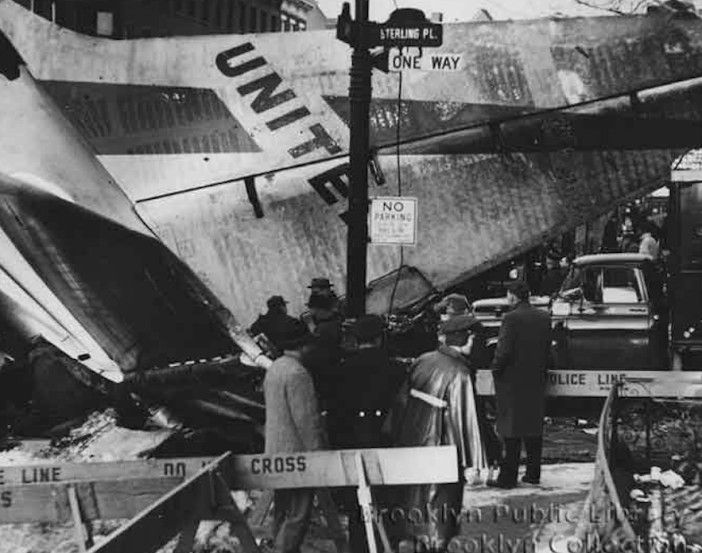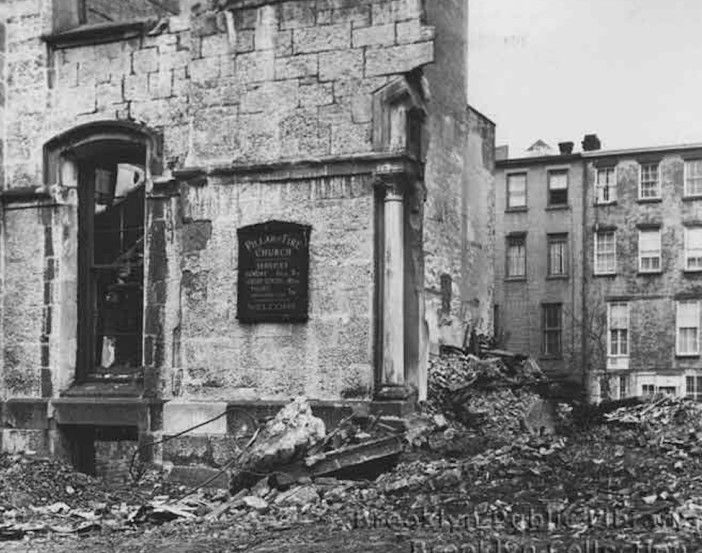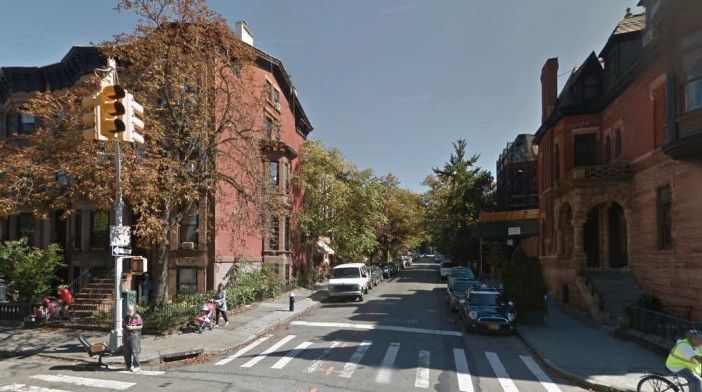Is 55 Years Too Late To Create A Memorial For 1960 Park Slope Plane Crash?

Sterling Place is an aptly named street. Whether you make a left or a right off of 7th Avenue, one can’t help but be struck by the beauty. The street is one of the most bucolic in our neighborhood.
Many neighbors have moved away from the neighborhood or passed on since December 16, 1960 — which serves as an important and tragic date in the neighborhood.
And many have of course moved in — some with little knowledge of what happened 55 years ago this past Wednesday.
United Airlines 826 was traveling from Chicago’s O’Hare airport to Idlewild (renamed to JFK) airport. TWA 266 was traveling from Columbus, Ohio to LaGuardia airport. Not long after the United Airlines plane lost radio navigation, the two planes had a mid-air collision.
TWA 266 crashed into Miller Field on Staten Island. United Airlines 826 crashed down onto the intersection of 7th Avenue and Sterling Place in Park Slope. All 128 passengers and crew members on both planes perished, as well as six people on the ground at or near the intersection.
Initially, there was hope that an 11-year-old boy named Stephen L. Baltz could survive his injuries. He was flying to New York to meet his family for a Christmas visit in Yonkers.
According to the New York Times, when “Baltz was still conscious after the midair collision, having been thrown from the fallen plane’s tail in Park Slope, Brooklyn, he told his rescuers he worried that his mother would be waiting without knowing what had happened. Later, when his father arrived, he tried to smile, but he was too badly burned to do so.”
Baltz was taken to Methodist Hospital, dying there the next day because his burns and other injuries were too severe.
Arlene Erickson was living at the time on nearby 7th Street, between 5th and 6th Avenues. She recalls that “the plane went down and everyone went to Sterling Place to witness it and to help. Police were holding people back.”

Among other buildings, the Pillar of Fire Church was destroyed. Nathaniel Altman writes that “the plane’s right wing struck the roof of a brownstone at 126 Sterling Place, causing the fuselage of the plane to veer to the left and crash directly, with tragic irony, into Pillar of Fire Church across the street.”
“You could see the flames for blocks. A few days after, there was a hole in the street, which was horrible,” continues Erickson. “People in the neighborhood talked about it for a long time afterwards.”
As each anniversary passes, articles are written recalling the tragedy. Yet some believe the recollections should have a more concrete element to recognize the event.
Erickson’s daughter Tina Erickson currently lives in the neighborhood. Her father has sinced passed on, but also witnessed the events following the collision. “As for me, and if it’s not too corny or Biblical, I think the site should be commemorated,” she says, “not just for the more than 100 souls that were lost that day, but as a reminder that our lives are but a mist.”
In an article by The New York Times months after September 11, 2001 which discussed the idea of rememberances, David Dunlap wrote about the “8-by-14-inch plaque in the chapel of New York Methodist Hospital in Brooklyn. Embossed on it are four dimes and five nickels that were in the pocket of 11-year-old Stephen Baltz.”

Remembering the event requires a deeper look into today’s structures. Andy Newman writes:
“At 126 Sterling, where a 25-foot section of the plane’s right wing knifed through a peach-brick four-story apartment complex, the building still stands, but its bunting-patterned tin cornice is gone; the two matching buildings to the right still have theirs. The first dozen courses of brick below the rebuilt roof don’t match the rest. They are shinier, lighter: newer.
On Seventh Avenue, at the back of the brownstone at No. 20 that caught fire, a second-floor window was never replaced and has been bricked over. Titus Montalvo, who has lived on the ground floor for nearly 40 years, said that a former landlord warned him he might find fingers while digging in the garden.”
There were certainly questions about the neighborhood’s future soon after the crash. And there was activism as well.
“…Community leaders who helped save Park Slope at that critical time,” writes Altman, “[included] Robert Makla, who helped found the Park Slope Civic Council; Irene Wilson, publisher of the monthly Park Slope Civic Council News; Evelyn and Everett Ortner, founders of the Brownstone Revival Movement and who helped secure landmark status for many local buildings; Herb Steiner, whose organization helped force the banks to stop redlining urban neighborhoods; and George Lovgren, who saved a local firehouse from closing.”
Is 55 years from an event too distant to enact a memorial? And if there is a desire to do so, who will take up the cause?




